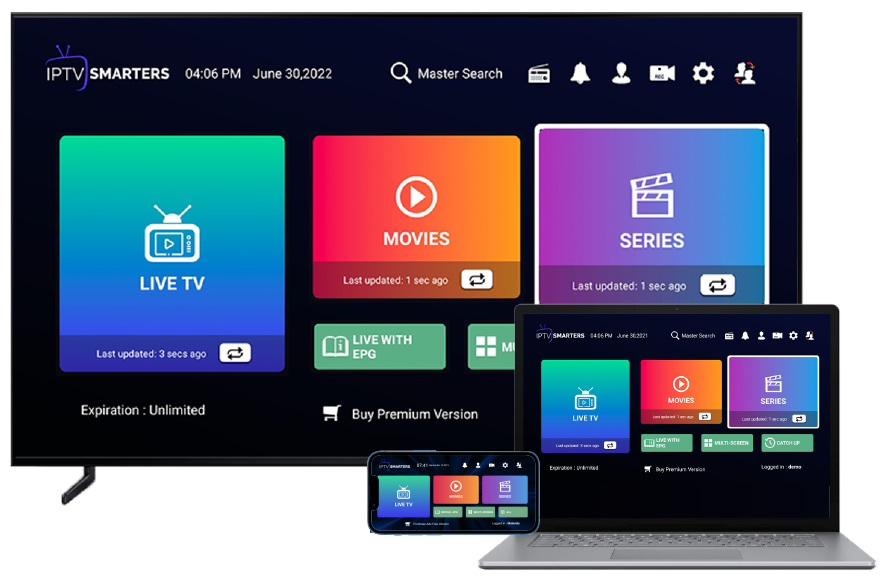Update Your Enjoyment: Affordable IPTV Subscription Plans
Update Your Enjoyment: Affordable IPTV Subscription Plans
Blog Article
Exactly How IPTV Works: A Step-by-Step Guide to Net Procedure Television Technology
Net Procedure Tv (IPTV) has actually reinvented the way we consume television material, providing a brand-new world of opportunities via the power of the net. Comprehending the ins and outs of how IPTV works can clarify the technology that drives this innovative kind of media shipment. From the basic concepts of IPTV to the complex procedure of material delivery, each action plays a crucial duty in making certain a smooth viewing experience. In this guide, we will uncover the underlying devices that make IPTV a fascinating combination of technology and amusement.
IPTV Essentials
In understanding IPTV basics, it is crucial to comprehend the fundamental functions of this modern technology in delivering tv content over the web. IPTV, which means Net Procedure Television, makes use of Net Method (IP) networks to transfer television web content to individuals' tools. Unlike traditional methods of broadcasting television material with cable or satellite signals, IPTV streams media with high-speed web links.

Moreover, IPTV permits interactive capacities, such as video as needed (VOD) and digital program guides (EPG), improving the customer experience by offering even more control and flexibility in accessing material. Generally, comprehending the essentials of IPTV sets the structure for exploring its advanced performances and the benefits it supplies to contemporary television consumption.
Material Distribution Process
Effective material shipment in IPTV systems involves a well-structured procedure that makes certain smooth transmission of television web content over IP networks. The content delivery process in IPTV starts with the production of the video material, which is then inscribed into electronic style appropriate for IP transmission. This inscribed content is then securely saved on web servers referred to as media servers. When a viewer requests particular material, the IPTV system gets the asked for information from the media web servers and provides it to the customer's device over the net.

Middleware Functionality
With the assimilation of middleware, IPTV systems gain boosted performance that enhances user communication and web content monitoring. One of the essential features of middleware in IPTV is to allow customized user experiences by providing attributes such as interactive program guides, video-on-demand solutions, interactive advertising, and individual preferences management.

Gadget Compatibility
Provided the essential function of middleware in enabling smooth communication and content management in IPTV systems, a crucial element to take into consideration is the compatibility of tools used for accessing the IPTV solutions. Tool compatibility is crucial for making certain a smooth user experience and optimum efficiency when accessing IPTV material.
In the context of IPTV, device compatibility describes the capability of a gadget to efficiently engage with the IPTV solution, present content correctly, and sustain the needed methods and codecs for streaming video clip web content online. Different devices, such as smart Televisions, set-top boxes, smart devices, tablet computers, and computers, may have differing levels of compatibility with IPTV solutions.
To ensure a seamless viewing experience, it is essential for individuals to choose tools that are compatible with the certain IPTV solution they are making use of. In addition, IPTV company ought to supply assistance for a large range of tools to provide to the varied demands of their individual base. By prioritizing tool compatibility, both users and service providers can boost the overall IPTV experience.
Top Quality of Solution (QoS)
Thinking about the crucial function of maintaining a high standard of efficiency and reliability in IPTV systems, making certain regular Quality of Solution (QoS) stays a fundamental aspect of the user experience. QoS in IPTV refers to the ability of the system to deliver content with marginal disturbances, high resolution, and quick filling times.
Provider employ QoS mechanisms such as traffic prioritization, buffering, and mistake improvement to preserve a secure IPTV service. By prioritizing IPTV web traffic over less time-sensitive data, providers can make sure smooth playback even during peak use hours. Buffering helps make up for network fluctuations, while mistake correction methods enhance information stability.
Continuous monitoring and optimization of QoS criteria are important to adapt to altering network conditions and customer needs. Eventually, a robust QoS structure is vital for delivering a seamless and delightful IPTV experience to individuals.
Conclusion
In verdict, IPTV runs through the transmission of television content over net protocol networks. Top quality of Solution plays a useful site critical role in preserving the efficiency and dependability of IPTV solutions - IPTV subscription.
Report this page